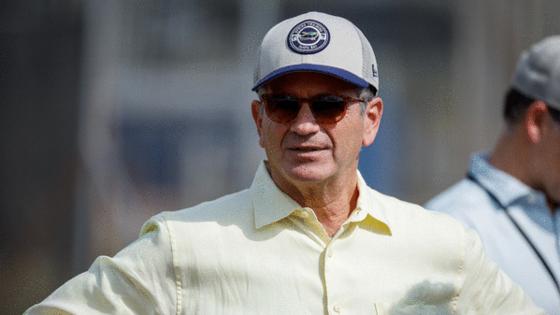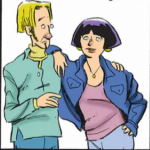John Romano: Instead of building a stadium, the Rays seem intent on burning bridges
Published in Baseball
ST. PETERSBURG, Fla. — Turns out, silence was preferable.
Who knew?
All these weeks later, we thought we wanted to hear from the Rays. We thought we needed clarity and fresh ideas on the stadium stalemate. Instead, when Rays executives went on a team-sponsored radio show Thursday evening, they aired old gripes and grievances.
Apparently, their beef with the Pinellas County Commission wasn’t enough and the Rays opted to pick a fight with St. Petersburg officials as well. Mayor Ken Welch and a handful of city council folk were just about the last allies the Rays had in the universe and now they’ve managed to tick them off, too.
Are the Rays justified in their anger and disappointment?
To a degree, yes. This whole fiasco began when the commission tried interjecting itself in the team’s post-hurricane search for temporary housing, and the subsequent delay changed the makeup, and viewpoint, of both the commission and the council in a post-election world.
But commissioners eventually realized their error and correctly surmised they were about to be held responsible for the bungling of a $6.5 billion redevelopment deal that would have included a new baseball stadium, and thus reversed their stance 49 days later.
That could have been the end of the squabble. In a perfect world, it would have been.
But the Rays have held onto their anger like a shield, keeping everyone else at arm’s distance. They say the seven-week delay pushed the opening of the stadium from 2028 to 2029 and would cost the team untold millions in rising construction costs.
I suppose that’s possible, but it doesn’t need to be inevitable. And while the Rays have no legal responsibility to explain why they seem likely to let the redevelopment deal collapse, it would benefit them — and the rest of us — if they could explain in detail how a minimal delay could wreak havoc on a generational project that was expected to take 20 years to complete.
But they haven’t done that yet. And they’ve allowed the 49-day delay to turn into four months of uncertainty.
The team is scheduled to get $600 million in public money and another $130 million investment in infrastructure. That puts the team’s portion of the stadium at $700 million plus cost overruns, but even some of that will be offset by redevelopment profits shared with their partner Hines.
Considering how Tampa Bay’s attendance and revenue figures have underperformed compared to most Major League Baseball markets for nearly three decades, it’s reasonable to assume the team will not see huge profits upon the opening of a new stadium. So, yes, maybe their margin for error was slim. And maybe cost overruns will take a bite out of the revenues the Rays were counting on seeing beginning in 2028.
But, again, how significant could that be? And where is the evidence?
It’s almost as if the Rays had buyer’s remorse after agreeing to the deal, and the county’s delay on the approval of bonds gave them the necessary excuse to pull out.
In retrospect, the shredded roof of Tropicana Field might not have been Hurricane Milton’s most notable damage. What if the hurricane’s glancing blow across Tampa Bay caused greater harm to owner Stuart Sternberg’s faith in the long-term cost and stability of a new stadium?
While the current use agreement at the Trop puts the city in charge of insurance/repair for storm damage, the upkeep of the new stadium was going to be the responsibility of the Rays. That means rising insurance costs would be the team’s problem. That means increasingly volatile storm patterns would be the team’s issue. That means every new hurricane season would bring another round of uncertainty.
All of that is conjecture, of course. Nobody really knows what Sternberg is thinking.
But here’s what I do know:
If the Rays let this deal lapse, it will be the last chance Sternberg has to build a new stadium in Tampa Bay. The Rays have spent nearly 20 years dealing with a half-dozen mayors in Tampa and St. Petersburg, and this was the closest they came to shovels in the dirt. It’s hard to envision another politician sticking his/her neck out by offering hundreds of millions of dollars to an owner who has completely ceded the PR battle.
That means one of four scenarios:
1. The Rays fulfill their obligations by the March 31 deadline and the stadium/redevelopment goes ahead as planned. That seems like a longshot.
2. The Rays remain at the rebuilt Trop through 2028 when they effectively become free agents and Sternberg moves the team elsewhere. That’s a slight possibility, but MLB commissioner Rob Manfred has stated his preference is for the Rays to remain in Tampa Bay.
3. Sternberg sells the team and a new ownership group moves the Rays after 2028. Again, that would require MLB approval. Maybe the outlook will be different in three years but, for now, that seems doubtful.
4. Sternberg eventually sells the team to a local ownership group that forges a new stadium deal in either Pinellas or Hillsborough. This is the most likely outcome although it is far from guaranteed. Between the purchase of the team and the cost of a new stadium, you’re talking about an investment of more than $3 billion to be shared by an ownership group and local municipalities.
Suffice to say, Tampa Bay’s stadium mess has evolved from bad to worse with a teaser of a honeymoon in between.
The Rays feel like they are the aggrieved party in this scenario. And maybe, at one point, they were.
But their obstinance has outlived the original complaint.
And every day they continue down this path is another day nearer to an unhappy ending.
©2025 Tampa Bay Times. Visit tampabay.com. Distributed by Tribune Content Agency, LLC.







Comments